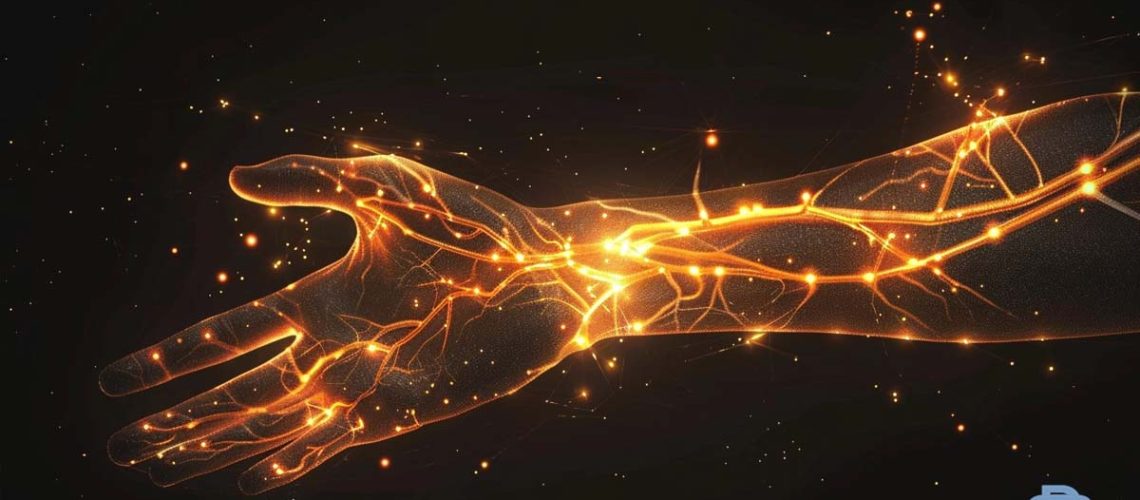“Funny Bone” Blues: Unveiling the Mysteries of Ulnar Neuropathy
Ever bump your elbow and feel that searing pain? That’s your ulnar nerve, a crucial pathway for sensation and movement in your arm and hand. But what happens when this nerve gets squeezed? This is ulnar neuropathy, a surprisingly common condition with a surprising range of symptoms.
From a subtle tingling to serious hand weakness, ulnar neuropathy can significantly impact your daily life, making simple tasks like grasping objects or buttoning your shirt a struggle. While not life-threatening, it can definitely throw a wrench in your daily routine.
The good news? Ulnar neuropathy is often treatable, especially if caught early. The key lies in understanding the various treatment options and intervening as soon as possible.
Join us as we delve into the world of ulnar neuropathy, exploring its causes, symptoms, and most importantly, the power of early intervention in regaining control and getting back to your life.
What is Ulnar Neuropathy
Ulnar neuropathy, a condition marked by the compression or irritation of the ulnar nerve, presents with distinct symptoms such as numbness, tingling, and weakness in the hand and fingers. This ailment, often stemming from entrapment of the ulnar nerve, can lead to discomfort and impairment in hand function.
The diagnosis of ulnar neuropathy is meticulously conducted through a combination of a detailed medical history review, a thorough physical examination, and specific diagnostic tests. Nerve conduction studies (NCS) and electromyography (EMG) are pivotal in evaluating the extent of nerve damage and in pinpointing the exact location of the compression.
Treatment strategies for ulnar neuropathy are tailored to the severity of the symptoms and the underlying cause of the nerve compression. Initial treatments may include rest, splinting, and physical therapyTreatment approaches like therapeutic exercises, hot/cold therapies and manual joint manipulation to improve mobility and reduce muscul... More aimed at alleviating pressure on the nerve and enhancing hand function. For cases where conservative approaches fail to yield sufficient relief, surgical intervention, such as nerve release surgery, may be pursued to decompress the nerve and prevent further nerve damage.
This thorough approach guarantees that each patient receives a personalized treatment plan to address their specific needs and promote top recovery.
Causes
Several factors, including prolonged elbow bending, direct trauma, and systemic conditions like diabetes, play pivotal roles in the development of ulnar neuropathy. This condition, characterized by the entrapment or compression of the ulnar nerve, often leads to a cascade of symptoms, most importantly affecting the ring finger and areas innervated by the ulnar nerve. Understanding the causes is essential for both prevention and treatment.
The causes of ulnar neuropathy include:
- Prolonged Elbow Bending and Repetitive Movements: Activities that involve repetitive elbow motions or maintain the elbow in a bent position for extended periods can lead to ulnar nerve entrapment, especially within the cubital tunnel.
- Direct Pressure and Trauma: Accidents or direct blows to the elbow can cause immediate damage to the ulnar nerve or lead to the development of conditions such as cubital tunnel syndrome over time.
- Systemic Conditions: Diseases like diabetes increase the risk of neuropathies, including ulnar neuropathy, due to the systemic effect on nerves.
- Anatomical Factors: Bone spurs, tumors, or constricting fascial bands can mechanically compress the ulnar nerve, leading to entrapment at the elbow.
Understanding these causes is vital for addressing the underlying factors contributing to ulnar neuropathy effectively.
Symptoms of Ulnar Neuropathy
Individuals suffering from ulnar neuropathy often report a range of symptoms that primarily affect the hand and elbow, including weakness, tingling, and sensitivity to cold. The condition stems from the compression or entrapment of the ulnar nerve, a critical component in the nervous system that plays a substantial role in the movement and sensation of the hand.
The symptoms of ulnar neuropathy vary in severity but generally encompass:
- Weakness or tenderness in the hand, making it difficult to perform tasks that require grip strength or fine motor coordination. This can profoundly impact daily activities and reduce quality of life.
- Tingling sensations in the palm and along the fourth and fifth fingers, often described as a feeling of pins and needles. This is a direct result of the ulnar nerve compression and can become quite bothersome.
- Sensitivity to cold and tenderness in the elbow joint, signaling the area where the ulnar nerve may be entrapped.
- Muscle wasting in severe cases, where prolonged compression of the ulnar nerve leads to a noticeable decrease in muscle mass in the hand, further exacerbating weakness and functional impairment.
These symptoms collectively highlight the debilitating impact of ulnar neuropathy on an individual’s ability to perform everyday tasks and maintain an active lifestyle.
Exams and Tests
To accurately diagnose ulnar neuropathy, healthcare professionals employ a variety of exams and tests, including electromyography (EMG) and nerve conduction studies (NCS). These diagnostic tools are essential for evaluating muscle function and detecting abnormalities in nerve conduction that are indicative of ulnar neuropathy. In addition, specific imaging techniques and parameters play a pivotal role in the diagnosis process:
- Electromyography (EMG): This test measures muscle response or electrical activity in response to a nerve’s stimulation of the muscle. It is vital for evaluating the health of muscles and the nerve cells that control them.
- Nerve Conduction Studies (NCS): By measuring the speed and strength of signals traveling in the nerves, this test helps to identify nerve damage and dysfunction.
- Imaging Techniques (MRI, Ultrasound, MR Neurography): These are used to visualize nerve compression and the surrounding tissues, aiding in pinpointing the location and extent of ulnar neuropathy.
- Nerve Ultrasound: Offers detailed images of nerve anatomy and compression sites, enhancing the accuracy of the diagnosis.
Together, these exams and tests are foundational in confirming the diagnosis of ulnar neuropathy, guiding treatment decisions, and monitoring the progression or recovery of nerve function.
Treatment
Treatment for ulnar neuropathy ranges from nonsurgical interventions to surgical procedures, depending on the severity and progression of the condition. Nonsurgical treatment options are often considered first, aiming to alleviate symptoms without the need for surgery. These can include occupational therapyFocuses on adapting environments or building skills that allow patients to better perform daily activities despite pain or disability. to improve strength and flexibility, the use of pain relievers like aspirin to manage discomfort, and splints for elbow immobilization to reduce nerve irritation.
When nonsurgical methods are insufficient, surgical treatment may be pursued. Nerve release surgery is a common approach to relieve pressure on the ulnar nerve at the elbow or wrist, aiming to restore nerve function and alleviate symptoms. Recovery from this procedure is generally swift, with patients typically resuming full activities within four to six weeks.
The table below outlines key aspects of treatment for ulnar neuropathy:
| Treatment Type | Description | Expected Outcome |
|---|---|---|
| Nonsurgical | Occupational therapy, pain relievers, elbow immobilization | Symptom relief without surgery |
| Surgical | Nerve release surgery at elbow or wrist | Alleviation of symptoms, restoration of nerve function |
| Recovery | Bandage removal in 24 hours, stitch removal in 10 days | Return to full activity in 4-6 weeks |
Surgical outcomes for ulnar neuropathy are generally favorable, with a high success rate in nerve decompression surgeries.
Prognosis Based on Symptoms
The prognosis for ulnar neuropathy varies greatly based on the severity and nature of the symptoms presented by patients. This variability is influenced by several key factors related to the condition’s impact on sensory and motor function, the effectiveness of surgical interventions, and the underlying severity and classification of nerve injuries.
- Severity of Symptoms: Patients with severe symptoms, such as grip weakness and intrinsic muscle wasting, often face a less favorable prognosis. These symptoms suggest a high degree of nerve damage, which can complicate recovery.
- Sensory vs. Motor Function Recovery: While sensory function outcomes are generally more positive, recovery of motor function in ulnar neuropathy cases tends to be more challenging. This discrepancy underscores the complexity of restoring full motor capabilities once they have been compromised.
- Surgical Intervention Outcomes: Surgical treatment, particularly simple decompression, has a high success rate, with 85-95% of ulnar neuropathy cases showing good outcomes. This suggests that timely and appropriate surgical intervention can enhance the prognosis.
- Impact of Nerve Injury Classifications: The use of classifications like Sunderland’s and McGowan’s to categorize ulnar nerve injuries based on their severity is vital. These classifications help in predicting the prognosis and guiding treatment decisions, as recovery from severe injuries, such as neurotmesis, may not be complete and can result in progressive muscle atrophy.
When Should I Contact Professional Doctor?
Understanding the prognosis of ulnar neuropathy highlights the importance of recognizing when professional medical consultation becomes necessary. Ulnar nerve entrapment can manifest in various ways, and early intervention is key to preventing long-term damage. If you experience persistent numbness and tingling in your little finger and ring finger, it’s a clear sign that the ulnar nerve may be compromised. These symptoms, along with difficulty executing fine finger movements, underscore the urgency of seeking professional help.
Furthermore, if you notice a decline in grip strength or encounter persistent elbow pain or tenderness, especially when bending the elbow, these could indicate the worsening of nerve entrapment. Muscle wasting or weakness in the hand or forearm is a serious sign of progression, necessitating immediate medical attention. Additionally, sensitivity to cold in the affected hand or a general worsening of symptoms over time further signals the need for a professional evaluation.
Can Ulnar Neuropathy Be Prevented with a timely Treatment method in place?
Early intervention and strategic preventive measures can greatly reduce the risk of developing ulnar neuropathy. By understanding the risk factors and implementing timely treatment methods, individuals can safeguard against the progression of this condition. The key to prevention lies in addressing the root causes of ulnar nerve entrapment and making lifestyle and ergonomic adjustments.
To prevent ulnar neuropathy effectively, consider the following strategies:
- Ergonomic Adjustments: Make ergonomic adjustments in your workspace and daily activities to minimize prolonged pressure on the elbow, thereby preventing nerve entrapment.
- Nerve Gliding Exercises: Regularly perform nerve gliding exercises to maintain nerve health. These exercises, along with ensuring proper wrist and elbow positions, can significantly reduce the risk of developing symptoms.
- Seek Medical Advice: At the first sign of persistent hand numbness, weakness, or any discomfort suggestive of ulnar neuropathy, seek medical advice for a timely treatment plan to prevent further nerve damage.
- Modify Activities: Avoid repetitive elbow movements and take frequent breaks during activities that strain the ulnar nerve. This preventive measure is important for those whose occupations or hobbies put them at risk.
Incorporating these preventive strategies can greatly diminish the chances of developing ulnar neuropathy, ensuring better nerve health and function.

